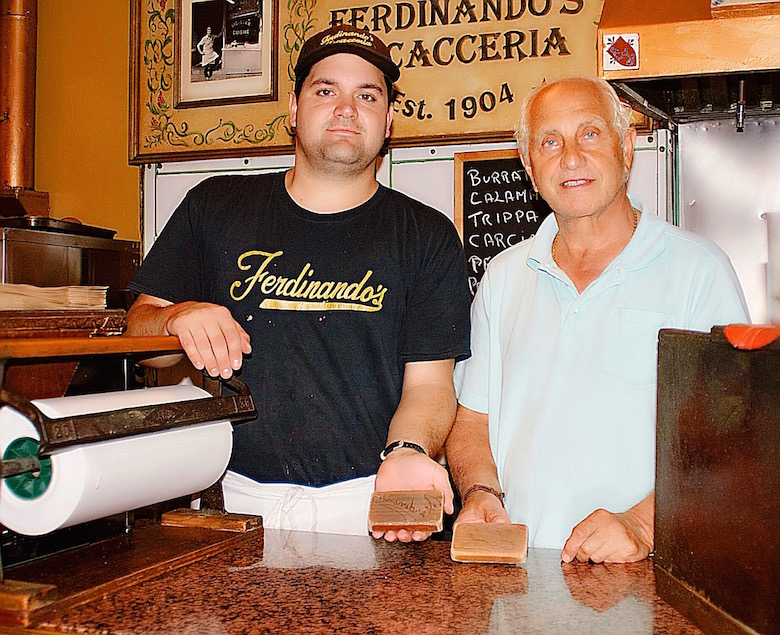
Can Ferdinando’s Focacceria be summed up in a few words? Old-school. Fiercely independent. No Instagram. Ferdinando’s is about when Brooklyn was really Brooklyn—not a brand to be globally exported, but a home to the great working class of New York City.
The restaurant first opened in 1904 as a sandwich shop to serve the working longshoremen at the nearby waterfront, during a ten-year span when over two million Italians arrived as immigrants. Brooklyn Italians came from different regions of Italy, each with their own food culture. Ferdinando’s has kept a pact with its history, remaining true to those foods, and today a third generation continues that loyalty. The food here is Sicilian-American comfort food.
It’s mid-afternoon at Ferdinando’s in the Columbia Waterfront. At the door is a very big guy with a very gentle smile: David, one of owner Frank Buffa’s three sons. Frank is here, too, as always—he’s the wiry man behind the counter, his sharp blue eyes aware of everything going on in the place. Groups of four or five laugh and talk across tables laden with food, a subdued sound of clattering dishes rises along with smells of garlic, tomatoes and other good things, all warmed by the sunlight through the back door to the patio where the statue of the Virgin Mary sits embraced by green vines.
Ferdinando’s is located where three gentrifying neighborhoods meet: Red Hook, Carroll Gardens, and Columbia Waterfront. Frank was aware of this trend and bought the building years ago to protect the family’s legacy.
“We still have people whose families come in, whether they’re from the old neighborhood, or whether they’re visiting, they come to the old place,” David says. “They say, ‘When I’m in the neighborhood I have to get my panelles and potato!’ The panelle and potato is what we’re famous for—the way we make it, we always make it fresh. It takes a lot of work, and to this day it’s associated with the restaurant, passed down from my grandfather. People go to Sicily and they come back and say, ‘You know, yours is still better,’ and that’s an honor. I always recommend to people ‘Get the panelle and potato—it’s the best of both worlds!’ “
At Fernando’s, the panelle and potato, as well as the Vastedda (a hard-to-find tripe sandwich specialty), are topped with a dollop of ricotta then briefly warmed in the oven. David explains how it happened that ricotta was added, as the original Sicilian recipes don’t include it.
“I don’t know the whole story, but the one I heard was that my grandfather had the sandwich then certain people asked for it and said, ‘Hey, can you put this ricotta on it?’ and my grandfather said, ‘No, it doesn’t go, but you can if you want,’ and he would put it on top for the people who wanted it, and it carried on, and that’s how it happened. In Sicily, they just put grated cheese. When the Sicilians come here and you ask them if they want it, they look at you as if you’re doing a sin.”
The pasta al sarde served here is another rarity, not often found at Italian-American restaurants. David explains, “Pasta con sarde is very special—I’ll tell you why. It has a lot of ingredients and people taste the authenticity of the restaurant. We used to only make it on special holidays and meatless Fridays. People call and say, ‘We hear you still make pasta con sarde,’ and they travel here for that. My father won an award from Time Magazine for that dish.”
David sums up the family’s philosophy: “Keep it simple, keep it classic. Do it right, with your heart and soul, and you can never go wrong.”



